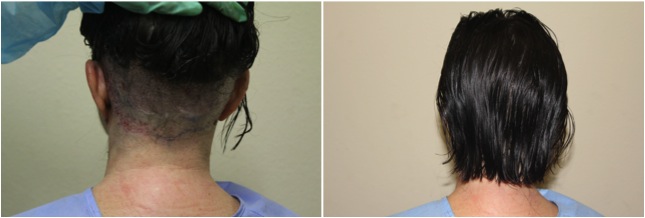Female Pattern Baldness – Why is it Little Known ?
For some reason, it is a lesser-known topic, but no less devastating or demoralizing when a woman discovers that the part in her hair has mysteriously grown to a half-inch gap. A permanent gap. Similar to men, the lost hair has fallen victim to the miniaturizing effects of the hormone DHT. And while female pattern baldness is moderately genetic, it seems more a cause of aging and hormonal changes than in men.

Other Female Hair Loss Causes and Cures
Another major cause of hair loss in women, which may also be a worsening factor for FPB, is malnutrition. Women tend to put others before themselves and skimp on meals to maximize what little time they have. This needs to stop. Nutrition is a key factor in all types of bodily functions, and healthy hair growth is certainly one of them. Simply put, the follicles need to be fed in order to live. Manifestations of malnourishment can include:
- Crash dieting
- Pregnancy
- Thyroid dysfunction
- Anemia
- Poor circulation
Aside from the preventative solutions to these additional factors (eating healthy, taking a multivitamin), cures for female hair loss aren’t as abundant as they are for men. Since Propecia is contraindicated in women due to child-bearing, ladies basically have Rogaine and hair transplant to choose between. Rogaine is easy to access—it’s available for purchase at any drug store—and relatively inexpensive, but must be used indefinitely to be effective. There may also be side effect with use.
Hair transplant is a safe, permanent, and minimally invasive solution to female pattern baldness. Typically, with the right surgeon, results look incredibly natural. Dr. Umar has performed FUE hair transplant, and even body hair transplant, on female patients with great success.
Watch video of result of UGraft FUE in a woman with traction alopecia
